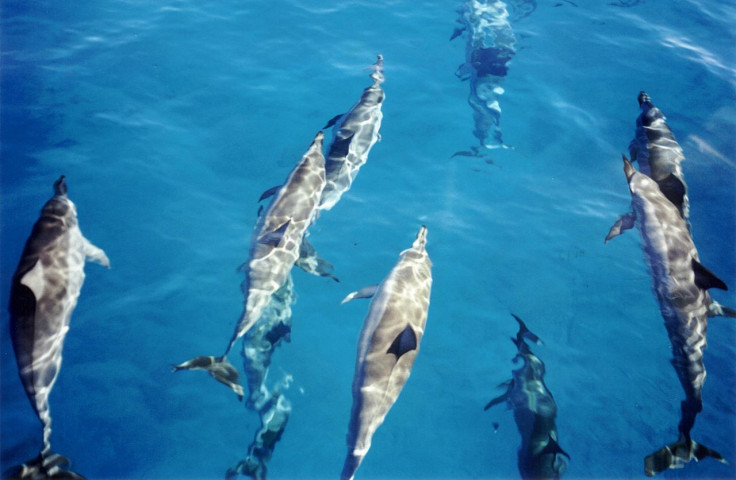Two-Headed Dolphin Found In Turkey Is A ‘Very Rare’ Occurrence

A two-headed dolphin was found dead on a beach in Turkey last week, drawing interest from marine biologists who say such an animal is a rare find and something worth studying. Now, a university in Antalya would like to display the carcass in its museum but cannot locate the remains, the Associated Press reports.
While the bizarre creature made a splash on social media after photos of the conjoined corpse went viral Monday, Mehmet Gokoglu, a marine biologist at Akdeniz University, said the university does not know the whereabouts of the two-headed dolphin despite initial reports the body had been taken to a nearby laboratory for analysis.
“Such a dolphin is a very rare occurrence -- similar to the occurrence of conjoined human twins,” Gokoglu said. The dolphin, believed to be that of a 1-year-old calf, measured just 3.2 feet, the Telegraph reported.
Two-Headed Dolphin Found on the Beach in Izmir - http://t.co/h8gFOG64cM pic.twitter.com/QdWZPAWfCE
— AndNooneKnows (@AndNooneKnow) August 12, 2014Dead two-headed #dolphin discovered in Turkey http://t.co/O8II48V06D pic.twitter.com/b25U25IdXN
— WTOP (@WTOP) August 12, 2014A tourist discovered the two-headed dolphin calf on a beach in Dikili, near the Aegean city of Izmir, local media reported. The witness looked on as the dolphin washed ashore. “I couldn't take it in at first,” the tourist said, according to Daily Mail. “I thought my eyes were playing tricks on me. I've never even heard about a dolphin like this let alone seen one with my own eyes. I was completely shocked.”
Multiple heads in animals, a condition known as polycephaly, is extremely unusual, but not unheard of. It occurs most commonly among tortoises and snakes, but has been seen in fish and mammals.
Contrary to the belief that two heads are better than one, polycephalic animals are less likely to survive to adulthood compared with the “standard” members of its species. The reason is a delayed reaction to danger, researcher Andrew Khund said. If one head perceives an immediate threat, but the other one does not, the two brains send conflicting messages to the rest of the animal’s body. A two-headed animal is more likely to become the main course for a predator.
In 2011, a two-headed bull shark was discovered in the Gulf of Mexico. Researchers discovered a two-headed ray fetus last year in Australia.
© Copyright IBTimes 2024. All rights reserved.












